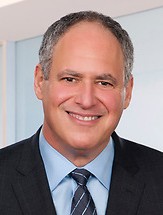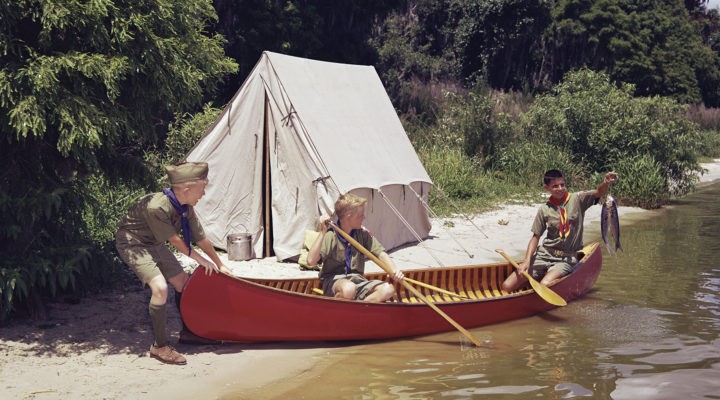Chartered organizations of Boy Scouts of America — which includes thousands of U.S. churches — are being handed a “get-of-jail-free card” by the latest proposed bankruptcy settlement, according to a law firm appointed to represent the 82,500 men who claim they were victims of child sexual abuse within the organization.
Within BSA governance, a “chartered organization” is a church or school or civic group that agrees to sponsor, and sometimes house, a Boy Scout troop or Cub Scout pack. Historically, Mormon congregations and United Methodist churches have been among the largest such chartered organizations, although churches of all varieties also are in this group,
One of the outstanding questions within the complex legal maneuvering as the BSA seeks to work through bankruptcy and settle abuse claims is whether these chartered organizations should be held liable for abuse that happened on their property or under their watch. Most chartered organizations had been told that they were shielded from liability by insurance provided through regional BSA councils.
Most chartered organizations had been told that they were shielded from liability by insurance provided through regional BSA councils.
The Church of Jesus Christ of Latter-day Saints, known as the Mormons, is a key figure in this settlement because of its leading role sponsoring BSA troops. Although the LDS Church has withdrawn entirely from affiliation with the BSA, it still faces potential liability from the thousands of claims of abuse that happened over decades within Mormon-affiliated troops.
In the latest settlement plan put forward by the BSA — the fifth such plan in two years — the Mormon Church has offered to settle all current and future Boy Scout-related claims for $250 million.
That money would be combined with $850 million from 250 local BSA Councils, $787 million from the Hartford Insurance Company and an unknown amount from the BSA’s other primary insurer, Century Indemnity Co. The total pool of compensation funds, then, currently stands at $1.887 billion.
‘The worst settlement of child sex abuse cases’
But with at least 82,500 alleged abuse victims in line for compensation, that divides out to an average of $22,000 per claim — an amount the victims’ group claims is grossly below what should be paid. In reality, whatever funds are available will not be paid evenly but will be allocated by the court based on factors such as severity and duration of abuse.
“In a case where half of the abuse includes multiple instances of penetration and masturbation of children, payments in the range of $10,000 to $12,000 do not begin to justly compensate survivors,” said James Stang, counsel to the Tort Claimants’ Committee, the court-appointed representative for all victims. “

Jason Amala
“This is historic in that it is the worst settlement of child sex abuse cases in the history of child sex abuse litigation,” Jason Amala of Pfau Cochran Vertetis Amala, a law firm representing more than 1,000 Boy Scouts abuse survivors, told Reuters.
“This is historic in that it is the worst settlement of child sex abuse cases in the history of child sex abuse litigation.”
Likewise, Reuters quoted Evan Smola, a partner at Hurley McKenna & Mertz, a law firm representing 4,000 victims, as saying the likely survivor payouts pale in comparison to other recent sex abuse cases, including the University of Southern California and Michigan State University, which provided payouts well into six-figure amounts, and sometimes over $1 million, per survivor.
“This is, we consider, a revictimization of our clients,” Smola said.
Competing views among victims’ advocates
While the latest settlement plan has been endorsed by the Coalition of Abused Scouts for Justice, which is comprised of 27 law firms that represent 65,000 sex abuse claimants, the larger, court-appointed group to serve the interests of all abuse victims, does not agree.
The Official Tort Claimants’ Committee in BSA’s chapter 11 bankruptcy cited “three major flaws” in the plan.
First, the local councils have access to much more money than they have put on the table including “billions of dollars of cash and property in excess of their current need to fulfill the mission of Scouting,” the group charged. “Local councils should not be allowed to keep billions of dollars of cash, investments, and real estate that is far in excess of what they need for Scouting while leaving survivors woefully undercompensated,” said John Humphrey, chairman of the Official Tort Claimants’ Committee.
Second, chartered organizations “are not paying for the broad releases of sexual abuse claims,” it added. “Chartered organizations are being handed a ‘get-out-of-jail-free card’ in exchange for a transfer of their interest in the insurance policies that were purchased by the BSA.”
“Chartered organizations are being handed a ‘get-out-of-jail-free card’ in exchange for a transfer of their interest in the insurance policies that were purchased by the BSA.”
Third, the group asserts that the BSA’s insurers are being required to pay “only a small fraction of the coverage they are contractually obligated to provide.” Its news release said the BSA is “entering into settlements with the insurance carriers that fail to capture the billions in value they promised would pay the sexual abuse claims of survivors.
Why churches should pay attention
It is the second point that is most relevant to churches that have been BSA chartered organizations.
Chartered organizations are essential partners in delivering the scouting experience. They also are the front-line link between Scouts and the BSA, even though the chartered organizations are independent of the BSA. Particularly if alleged abuse happened under the church’s watch care or, even worse, on its property, the church could be found liable just as much as the BSA.
Most congregations carry their own liability insurance that would kick in to cover litigation related to child abuse — whether it happened through a church-run program like a youth camp or whether it happened through a church-blessed group like the Boy Scouts. But even that might not be enough, numerous church leaders are now warning.
A document published by the Central Texas Conference of The United Methodist Church advises any congregation that has in the past served as a chartered organization with BSA to seek legal counsel to protect itself from litigation related to Boy Scouts’ abuse claims — whether any claims have been filed or not.
“If your church at any time in its history has been a chartering organization for a Boy Scout troop then the potential exists for that church to be financially liable in any lawsuits brought against the Boy Scouts of America,” the document says.
It adds: “If the BSA goes through the bankruptcy process and extinguishes liabilities related to sexual abuse claims, a chartering organization (like a local church) may be the last entity standing with potential liability.”
The BSA’s website currently states that the general liability policy provided for chartered organizations “does not provide indemnification or defense coverage to those individuals who commit intentional and/or criminal acts. The Boy Scouts of America does not have an insurance policy that provides defense for situations involving allegations of intentional and/or criminal acts.”
BSA officials have said chartered organizations might have some protection from liability for abuse cases that occurred after 1975, due to insurance that began in 1976, but that chartered organizations likely would not be protected for cases that occurred prior to 1976.
Even the likelihood of chartered organizations such as churches being covered after 1976 is questioned by leaders of multiple Christian denominations who have advised their congregations to seek legal guidance promptly.
“The Boy Scouts are handing out releases like Halloween candy because the chartered organizations are threatening to revoke their future financial support of the Boy Scouts and local councils.”
More importantly, the Official Tort Claimants’ Committee representing victims believes chartered organizations such as churches must be part of the financial settlement, as indicated by the second of three objections above.

James Stang
“The Boy Scouts are handing out releases like Halloween candy because the chartered organizations are threatening to revoke their future financial support of the Boy Scouts and local councils,” said Stang, counsel to the claimant’s committee. “As a result, the chartered organizations are not paying a penny for the childhood sexual abuse that occurred under their roof. Instead of holding the chartered organizations accountable, survivors are being forced to release the chartered organizations in exchange for nothing more than an assignment of insurance policies that were provided by and paid for by the BSA.”
Where the case stands now
Any settlements given to victims must be approved by Chief U.S. Bankruptcy Judge Laurie Selber Silverstein, who oversees the BSA’s Chapter 11 case from Delaware. The BSA, represented by the law firm White & Case, hopes for court approval of the plan by the end of this year.
The latest proposed settlement document runs 495 pages in length. Given the strident objections from the Official Tort Claimants’ Committee and other victims’ advocates, no one is predicting whether the fifth plan will be the final plan.
Related articles:


